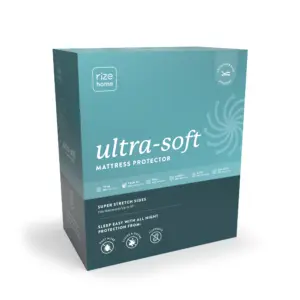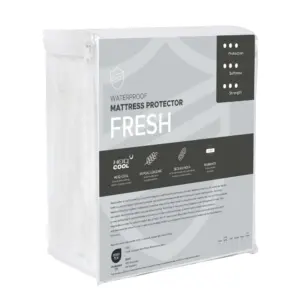The Ideal Temperature for Sleep: 4 Key Insights
Understanding Why the Ideal Temperature for Sleep Matters
Finding the ideal temperature for sleep is crucial for ensuring a restful night and waking up refreshed. The right temperature can mean the difference between a peaceful slumber and a night spent tossing and turning. Most sleep experts recommend maintaining a sleeping environment between 60°F and 67°F (15.6°C to 19.4°C). But what makes this temperature range so essential for quality sleep?
Optimal Sleep Temperature: 60°F to 67°F
Within this recommended range, your body can relax and transition naturally into sleep. Let’s explore how temperature affects our sleep:
– Too Hot: An overly warm room can cause disruptions, leading to poor REM sleep quality. When temperatures rise, your body struggles to cool down, which can lead to restlessness and frequent awakenings.
– Too Cold: On the flip side, a chilly room isn’t the answer either. If the temperature dips too low, it can hinder your ability to relax and make it difficult to drift off.
The Science Behind Sleep and Temperature
The temperature in your bedroom plays a pivotal role in regulating your body’s circadian rhythm. As night approaches, your body naturally cools down in preparation for sleep. A cooler environment signals that it’s time to rest, aligning with your internal clock. Dr. Kent Smith emphasizes this point, stating, “Even slight changes in body temperature can send powerful signals to our body’s internal clock.”
When your sleeping space is too warm or too cold, it disrupts this process, complicating your journey into slumber. This means that creating the right temperature is both a comfort issue and a medical necessity.
The Long-Term Impact of Sleep Quality
Proper sleep is not just about feeling well-rested; it’s an integral part of maintaining overall health. Disrupted sleep can result in irritability and decreased productivity throughout your day. Furthermore, chronic sleep deprivation poses more significant health risks, including heart disease, obesity, and diabetes.
To illustrate, studies have shown that consistently poor sleep—exacerbated by inappropriate room temperatures—can lead to metabolic changes, affecting everything from your mood to your immune system. Understanding the relationship between sleep and temperature is essential for safeguarding your well-being.
Tips to Achieve Your Ideal Sleep Temperature
Achieving the ideal temperature for sleep can be as simple as making a few adjustments to your nighttime routine and environment. Here are some practical ways to ensure your bedroom is conducive to restful sleep:
1. Invest in Quality Bedding: Choose sheets made from breathable fabrics such as cotton or linen. These materials facilitate airflow and help manage temperature throughout the night.
2. Use Climate Control Wisely: If you’re using air conditioning or heating, set your thermostat to maintain that ideal range. Consider programmable thermostats to adjust the temperature before bedtime automatically.
3. Ventilation is Key: Ensure your room has proper airflow. A fan can help circulate air, and opening windows can allow for a natural cooling effect, particularly on cooler nights.
4. Optimize Sleepwear: Your choice of pajamas matters. Opt for loose-fitting, breathable sleepwear to aid in temperature regulation. Avoid synthetic fabrics, which can trap heat.
Conclusion: Prioritize Your Sleep Environment
In your pursuit of better sleep, understanding the ideal temperature for sleep is a fundamental step. By targeting a bedroom temperature between 60°F and 67°F, you can create an environment that promotes deep, restorative sleep. As someone who has personally navigated the challenges of sleep deprivation, I know how transformative the right sleep environment can be. I’m Ben Trapskin, founder of Yawnder, and my mission is to share insights that can improve your sleep quality and overall health. Take charge of your sleep space and embrace the benefits that come with a restful night, because a good day starts with a good night’s sleep.













